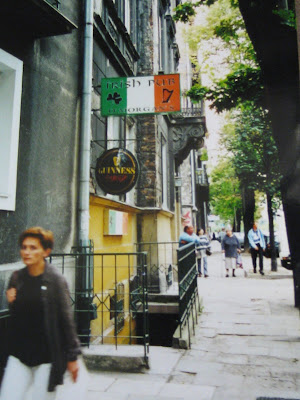
Last night I wrote about Ugadi, or Telugu New Year. When we were talking with my amma (mother-in-law) to prepare that post, she filled us in on the full range of preparations and celebrations. I took copious notes.
Here’s a list of what else we could have done (and likely will be doing next year now that I have the lowdown):
- Decorate the mirror with jewelry and a flower on top
Here’s a list of what else we could have done (and likely will be doing next year now that I have the lowdown):
- Decorate the mirror with jewelry and a flower on top
- Include betel nuts and leaves with the fruit
- Make sure the lamp faces out (see the picture above -- it amused my amma and produced this note)
- Prepare panchamirtham – literally, five-items elixir, which symbolizes the sweetness and bitterness of life -- a jam-like concoction of cardamom, raisins, honey, raisins, banana, tamarind, jaggery (unrefined, semi-moist molasses-tasting sugar) and rock candy, with neem flowers on top. I realize that’s more than five things, but that’s the list my mother-in-law gave me, and she’s the expert. It’s made the night before and placed on the shrine, then eaten when you drink the milk.
- Break a coconut as you’re praying (the second time) and pour its milk into a bowl with tulsi (basil) leaves
- Decorate front porch with rice flour mandala (this is done after the first prayer)
- Prepare sandalwood (a paste of sandalwood powder and water) and kunkum (I think of this as blessing powder; it’s a vermillion shade of red) and apply both to the forehead after the final prayer
- In the evening, prepare a meal of kesari, payasam, variety rice (tamarind, tomato, coconut, lemon, curd etc.), vada, appalams (you may know this as papadams), and vegetables
- Give the money from the shrine to children
- Visit the temple in the morning or evening
Clearly, I’m going to need to plan ahead – and hit the Indian grocery store. I'll also be consulting the cheat sheet I typed up.




























